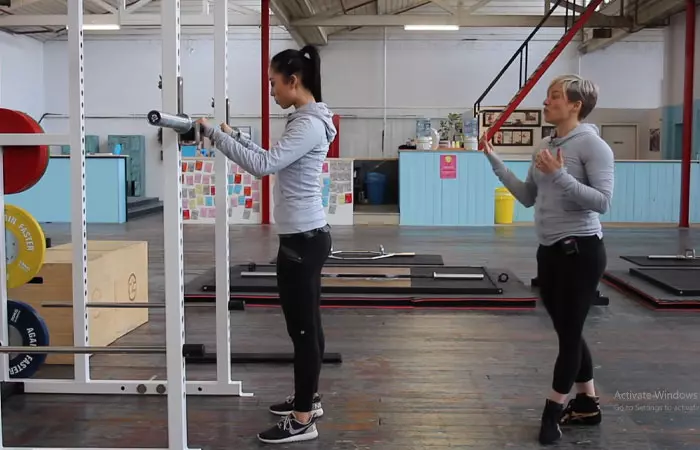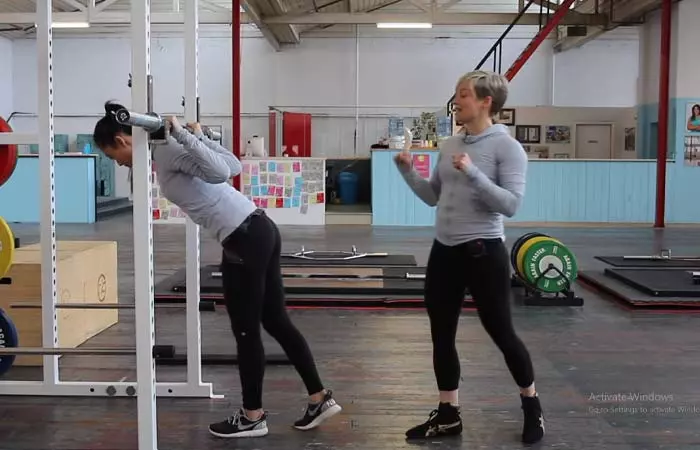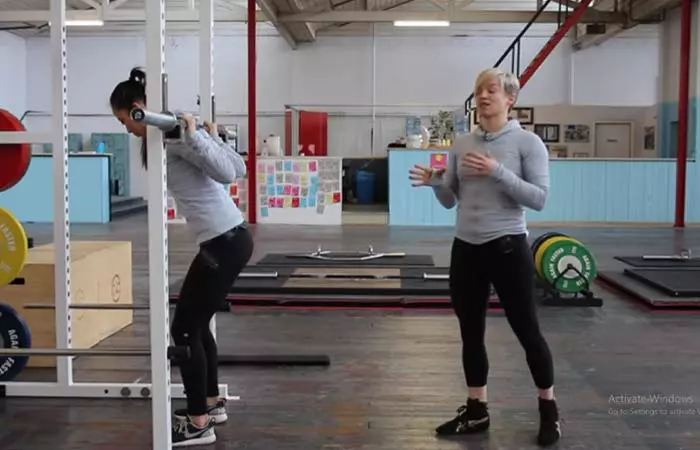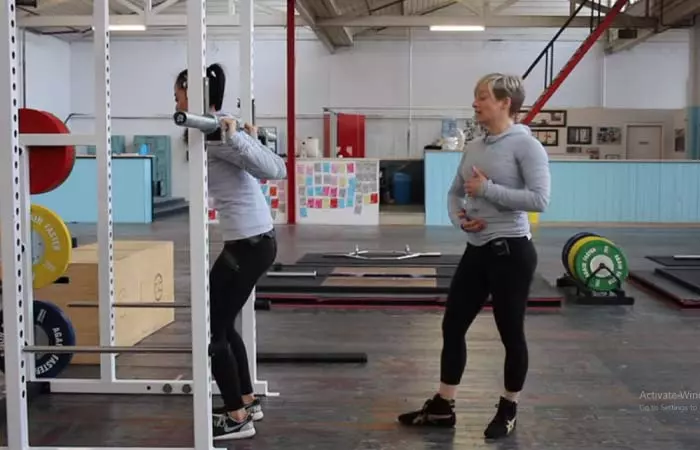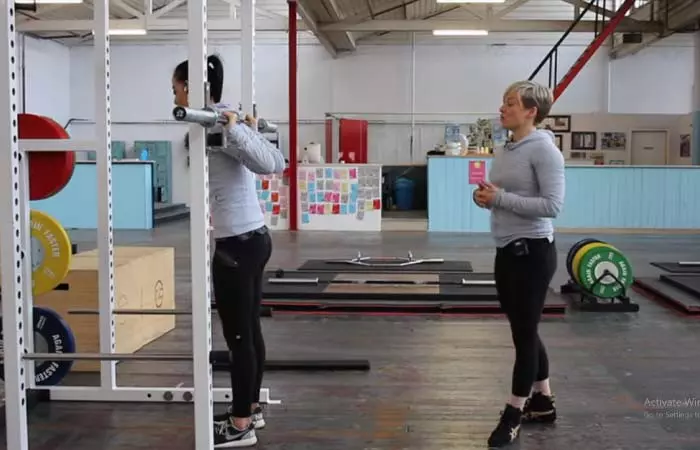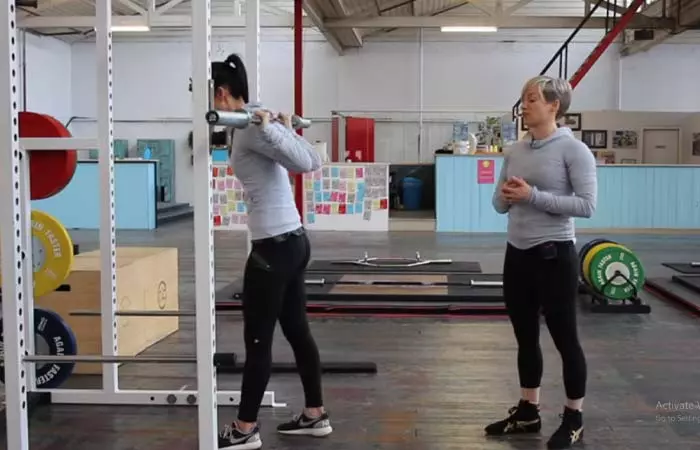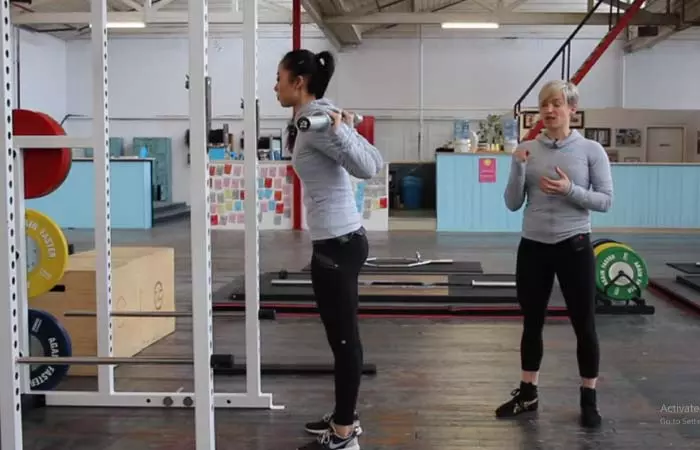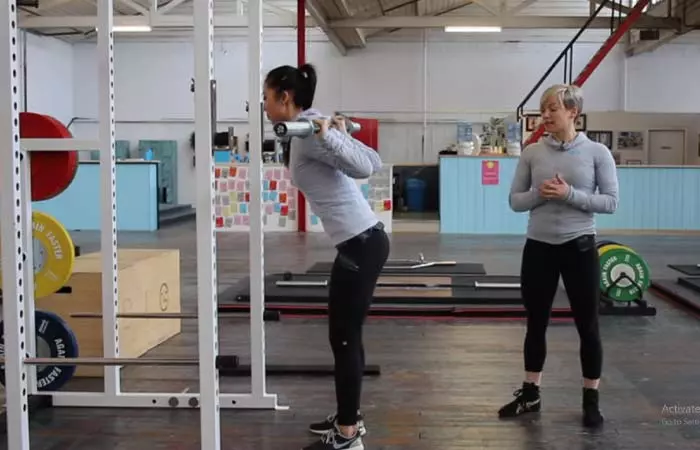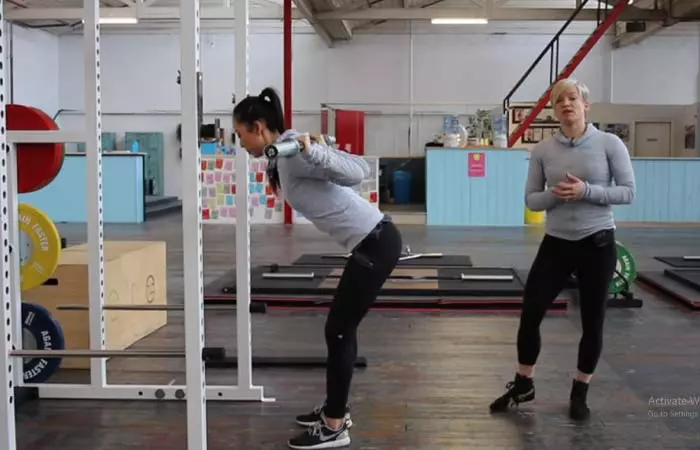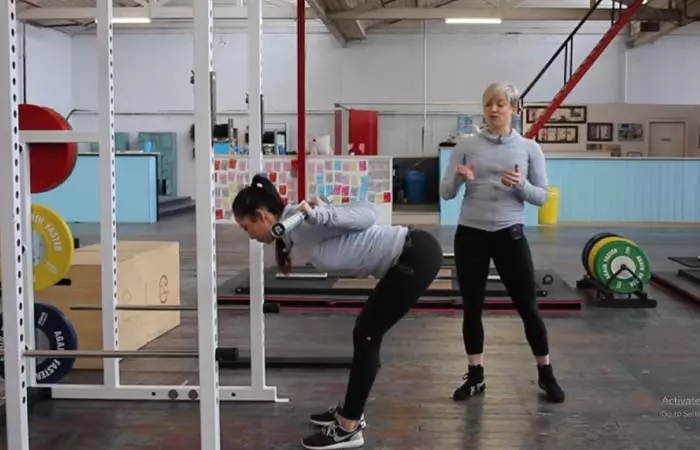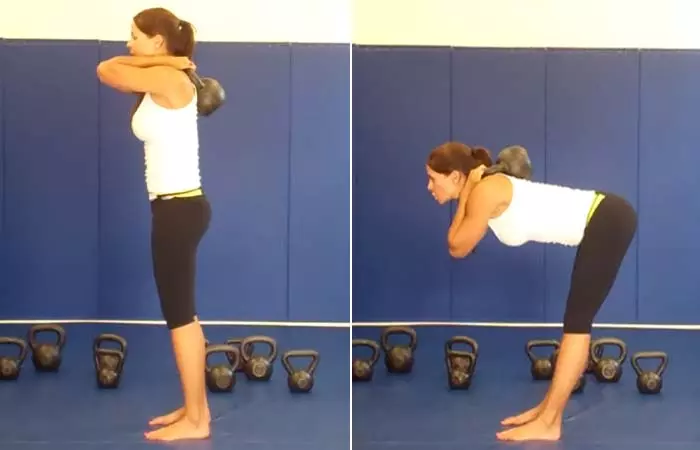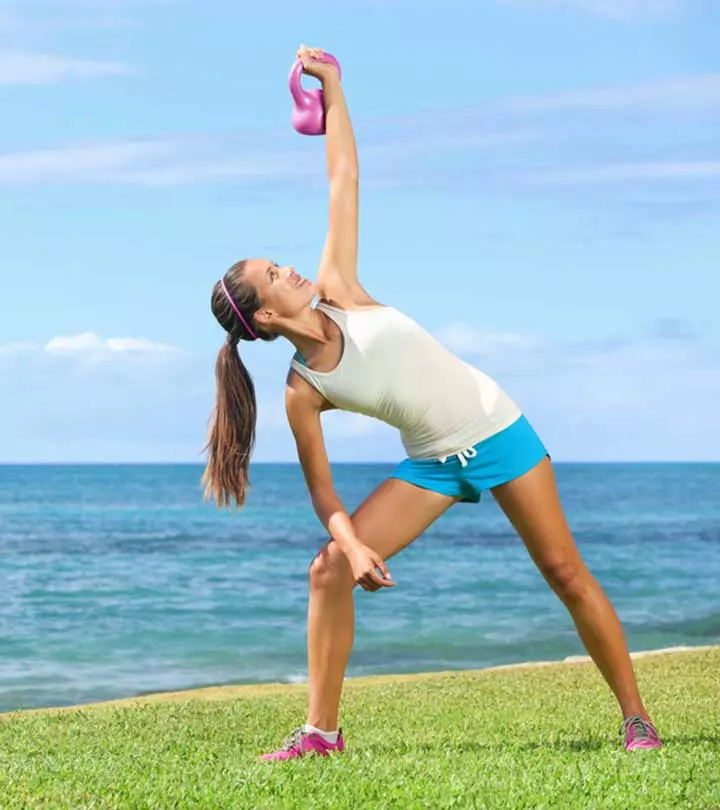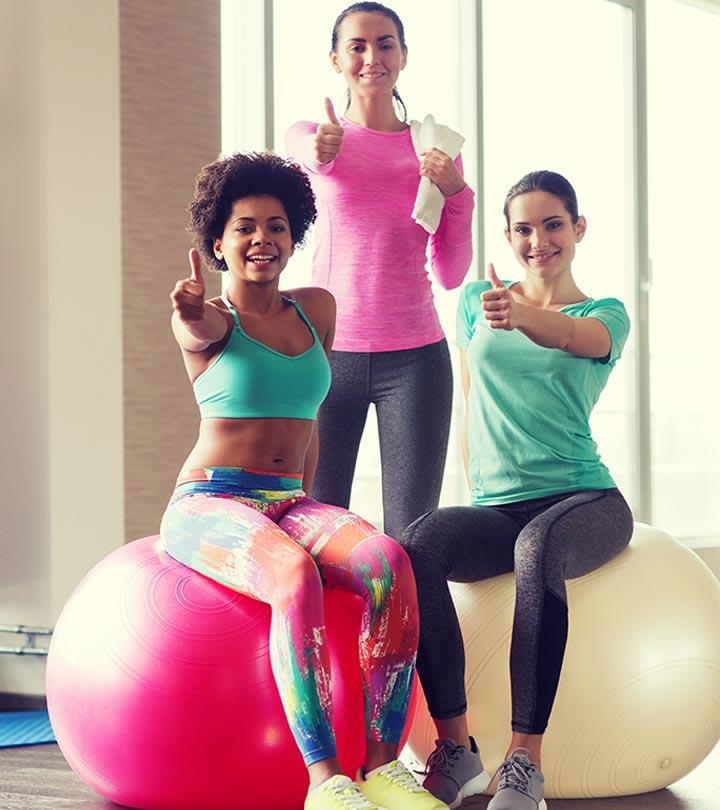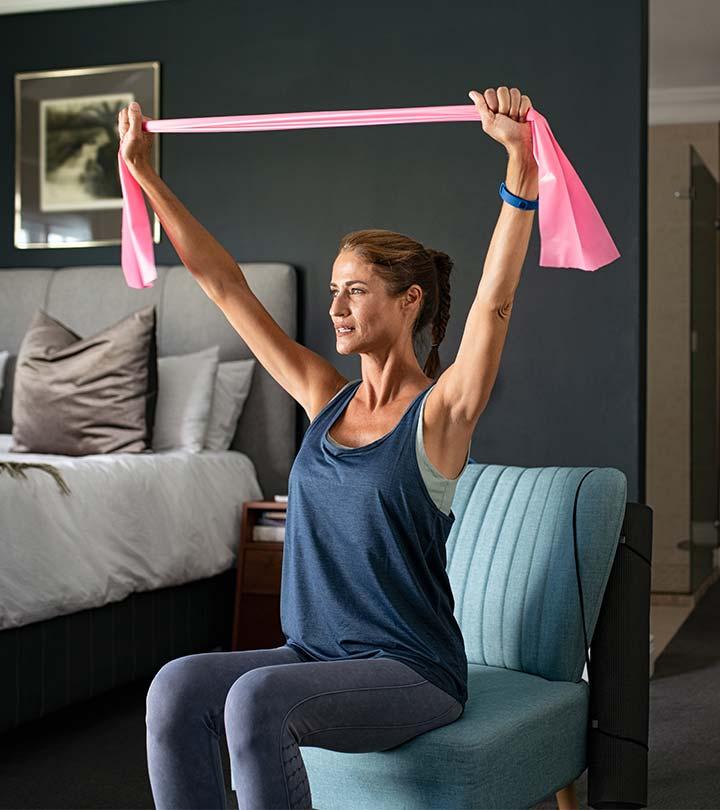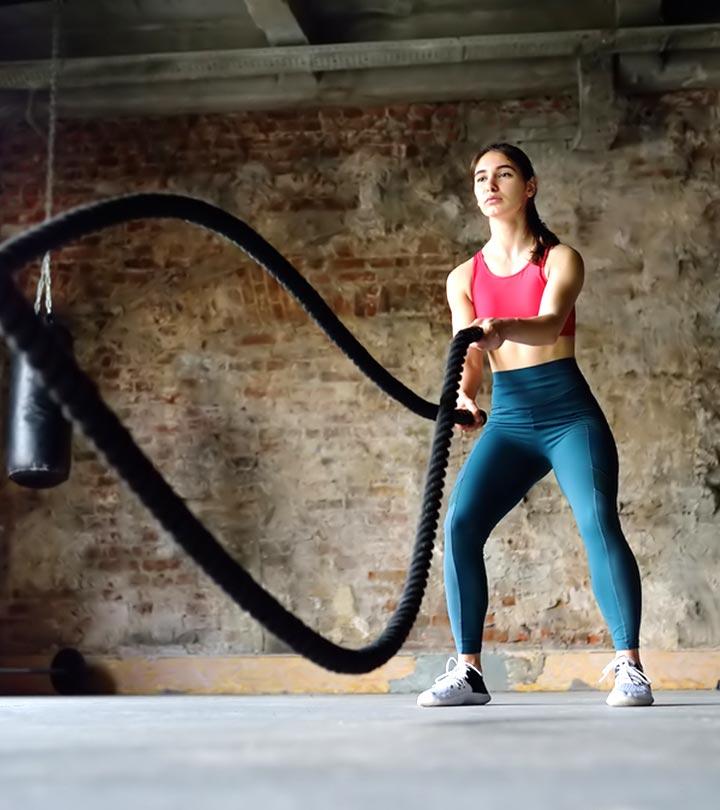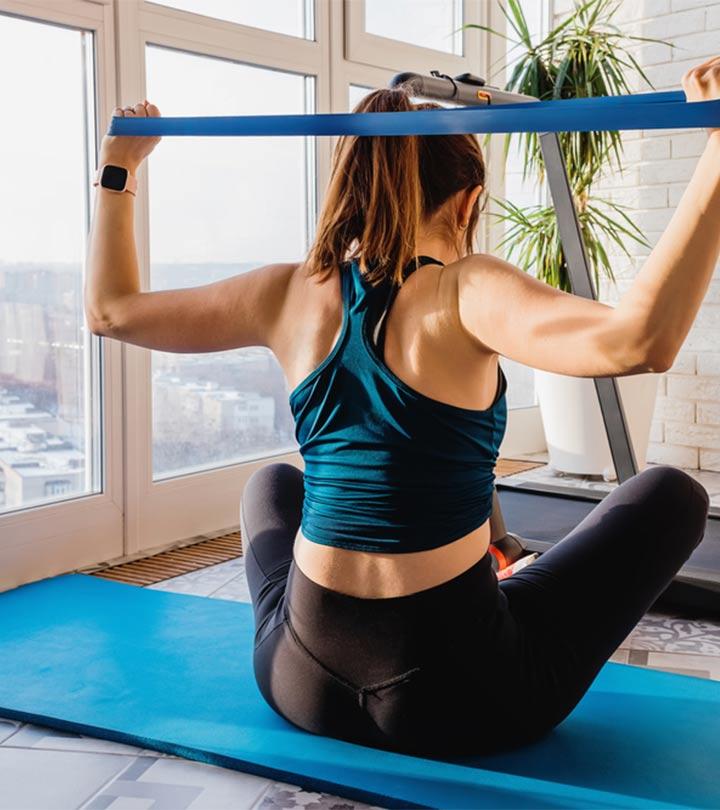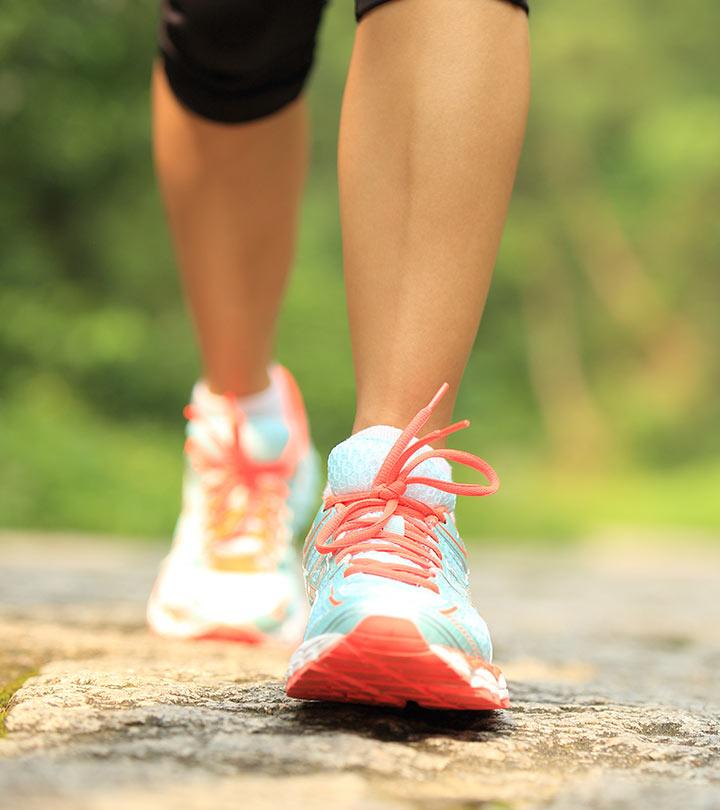Good Morning Exercise: Benefits, Mistakes, And Alternatives
A simple way to keep your core and back in the best condition!

Image: Shutterstock
The good morning exercise is ideal if you want to strengthen your core and back. You can perform this exercise with a barbell. It improves your muscle strength and gives your hammies a good stretch. But wait – there’s a catch.
Performing this exercise without proper form can hurt your neck, back, and shoulders. But fret not – we can help if you are new to it. Continue reading to understand how you can perform the good morning exercise safely, its variations and alternatives, the benefits, and the precautions you must take. Swipe up!
In This Article
What Is The Good Morning Exercise?
The good morning exercise is a hinging exercise performed with a barbell. It targets the glutes, upper and lower back, and hamstrings. The ‘hinging’ pose is done by bending from your waist and keeping your back straight and in line with your neck and head. Does this exercise have any benefits? Let’s find out below.
Benefits Of The Good Morning Exercise
The good-morning exercise helps strengthen the glutes, core, lower and upper back, and hamstrings.
Los Angeles-based certified personal fitness trainer, Thomas Jankas, NASM CPT, PST, CES, FTN NCEP, remarks, “I personally find it to be an amazing core, lower back, and hamstring warm up. It’s often used on any day I squat or deadlift. It’s a great way to prep those muscles to work while also training your neuromuscular system to get ready to hinge.”
This exercise also targets secondary muscles like the biceps, triceps, shoulders, and traps. It helps improve your muscle strength, coordination, and balance. Doing the exercise right can help you reap all its benefits. Find below the step-by-step guide to the good morning exercise.
How To Do The Good Morning Exercise Properly And Safely
Step 1: Stand in front of a squat rack and position your hands on the barbell set at chest level.
Step 2: Grip the bar, take a step forward with your left foot, and go underneath the barbell.
Step 3: Bring your right foot close to your left and place your shoulders against the barbell. Keep your knees slightly flexed and bend forward from the waist.
Step 4: Pull your hands apart. This will switch on all your upper back muscles. Tuck your hips to activate the core.
Step 5: Push through the knees to stand straight up and lift the barbell off the rack.
Step 6: Take a step back with your dominant foot.
Step 7: Bring both your feet in the same line and keep them hip-width apart. Look forward. This is the starting position.
Step 8: Inhale and push your hips back.
Step 9: Bend your knees slightly and lean forward keeping your spine in a neutral position.
Step 10: Lower your upper body until your back is parallel to the floor. You will feel the stretch in your glutes and hamstrings.
Step 11: Pause for a moment and come back up to the starting position.
That’s it! You have done your first rep of the good morning exercise. You can do 3 sets of 5 to 12 reps, depending on your fitness level. Beginners can perform the exercise under the supervision of a certified fitness trainer. They may stick to fewer sets and reps. Also, placing the barbell back on the rack is simple. Walk through the squat rack, place the barbell on the rack, bend down and come out from right underneath the barbell. In other words, do the opposite of what you did to get the barbell off the rack.
 Trivia
TriviaYes, doing this exercise correctly should be your priority. But you also must avoid common mistakes to reduce the risk of injury.
Common Mistakes To Avoid
The most common mistake while performing the good morning exercise is using a barbell that’s too heavy. Fitness trainer Thomas Jankas, NASM CPT, PST, CES, FTN NCEP, agrees. He says, “Only well-trained athletes for specific sports need to do heavy mornings. Good mornings should be used as a warm-up or a lighter accessory lift for most people. Lots of control with a light to medium load.”
Also, you must maintain a neutral spine while you hinge forward. Maintain a slightly concave lower back while your spine is parallel to the floor. Practice the good morning exercise with an experienced trainer to get the spine posture correct.
In fact, if you are a beginner and are not comfortable with a barbell, you can also perform this exercise with a dumbbell or a kettlebell or even without the weights! Check out the good morning exercise variations that suit your fitness level and comfort.
Good Morning Exercise Variations
1. Good Morning Exercise Without Weights
Steps
- Stand with your feet hip-width apart.
- Place your hands behind your head, chest out, and look forward. This is the starting position.
- Inhale and push your hips out, bend your knees slightly, and lean forward. Maintain a neutral spine position.
- Go down until your spine is parallel to the floor.
- Pause for a moment and come back to the starting position.
- Do 3 sets of 5 to 8 reps.
2. Good Morning Exercise With Dumbbell
Steps
- Take a 2-pound or 5-pound dumbbell with both hands. Hold it behind your head, chest out, feet hip-width apart, and look forward. This is the starting position.
- Inhale and push your hips out, bend your knees slightly, and lean forward. Maintain a neutral spine position.
- Go down until your spine is parallel to the floor.
- Pause for a moment and come back to the starting position.
- Do 3 sets of 5 to 8 reps.
3. Good Morning Exercise With Kettlebell
Steps
- Take a 2-pound, 5-pound, or 10-pound kettlebell with both hands.
- Hold it behind your head, feet hip-width apart, chest out, and look forward. This is the starting position.
- Inhale and push your hips out, bend your knees slightly, and lean forward. Maintain a neutral spine position.
- Go down until your spine is parallel to the floor.
- Pause for a moment and come back to the starting position.
- Do 3 sets of 5 to 8 reps.
These are the variations of the good morning exercise that you can perform. Start without weights and gradually move on to a dumbbell or a kettlebell. You may eventually try your hands on the barbell (without extra weights or the 2-pound weight plates on either side, depending on your fitness level). But here’s a word of caution. This exercise is not recommended for everyone. Scroll down to see who should avoid the good morning exercise.
Caution – Should You Avoid The Good Morning Exercise?
Avoid the good morning exercise if you have lower back pain, a slip disc, have just given birth, have scoliosis, have an injury, or have undergone surgery. Fitness trainer Thomas Jankas, NASM CPT, PST, CES, FTN NCEP, also echoes the same. He says, “Anyone who has any spinal cord conditions should check with their medical professional first to make sure the motion won’t put any unacceptable pressure on the disc.”
What can you do if you cannot perform a good morning exercise? Are there alternatives?
Alternatives Of The Good Morning Exercise
- Hip thrusts
- Glute bridges
- Sumo deadlift
- Bird dog exercise
Note: Those with spine issues are suggested to avoid exercises that hyperextend the lower back. Perform the alternative exercises under the supervision of a trained fitness coach. Always start with lower sets and reps.
One study compared the relationships between exercise timings, which included early morning exercise, exercise automaticity (habit strength), and the stability of exercise patterns over one year among 709 weight loss maintainers. The questionnaire revealed that the exercise adherence rate for morning people was 94%, while it was 87% for those who exercised in the evening.
 Trivia
TriviaThe good morning exercise is all about training your back and core. It also works on your hamstrings, lower and upper back, glutes, and secondary muscles like biceps, triceps, traps, and shoulders. It is important to do this exercise as mentioned above as poor form can hurt your shoulders, neck, and back. Do not use a barbell that is too heavy, and beginners may want to do it under the supervision of an expert and stick to fewer reps. Avoid doing the good morning exercise if you have a slipped disc, scoliosis, lower back pain, or an injury or are recovering from surgery.
Frequently Asked Questions
What is the difference between RDL and good morning?
The difference between RDL (Romanian deadlift) and good morning lies in the positioning of the barbell. In RDL, the lifters hold the barbells in front of their thighs, maintaining a shoulder-width grip and palms facing them. In good mornings, the lifters carry the barbells in a position similar to back squats.
How many good mornings should I do?
The number of times you should do this exercise is best decided by a professional as it depends on your strength, fitness levels, and health conditions.
Do good mornings work the abs?
Yes. Good morning exercise works the abs, hamstring, glutes, and back.
Key Takeaways
- The good morning exercise primarily works on your glutes, hamstrings, and upper and lower back.
- It improves your balance by strengthening your muscles. Secondary muscles like biceps and triceps are also targeted.
- Form is the most important factor in this exercise. Therefore, doing it in the presence of an expert is advisable.
Kickstart your day with a positive mood and improved health by incorporating this 20-minute workout challenge shown in this YouTube video into your morning routine. Hit the play button to get started!
References
Articles on StyleCraze are backed by verified information from peer-reviewed and academic research papers, reputed organizations, research institutions, and medical associations to ensure accuracy and relevance. Read our editorial policy to learn more.
- Effects of Yoga Versus Walking on Mood Anxiety and Brain GABA Levels: A Randomized Controlled MRS Study
https://www.ncbi.nlm.nih.gov/pmc/articles/PMC3111147/
Read full bio of Rakesh Rathod
Read full bio of Ravi Teja Tadimalla
Read full bio of Payal Karnik





